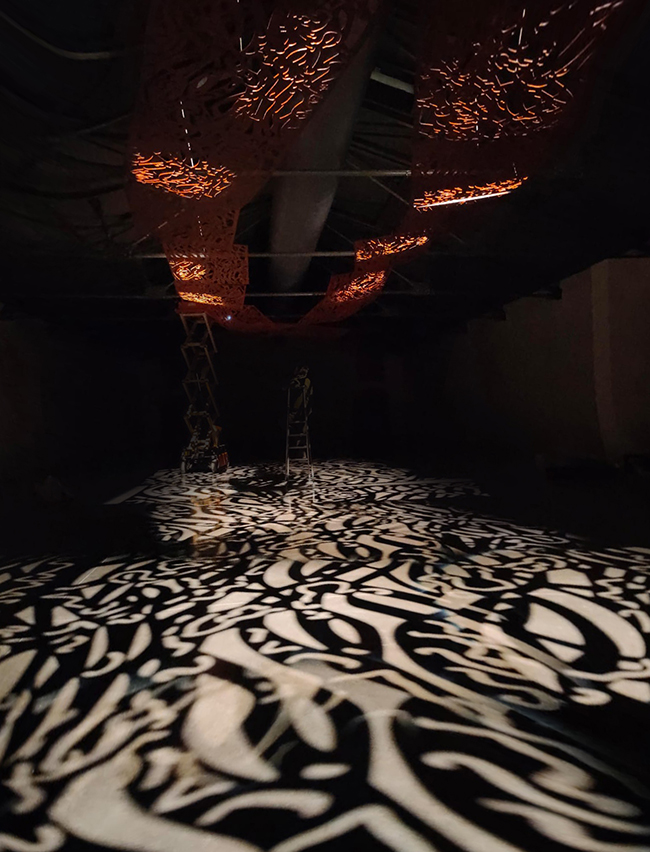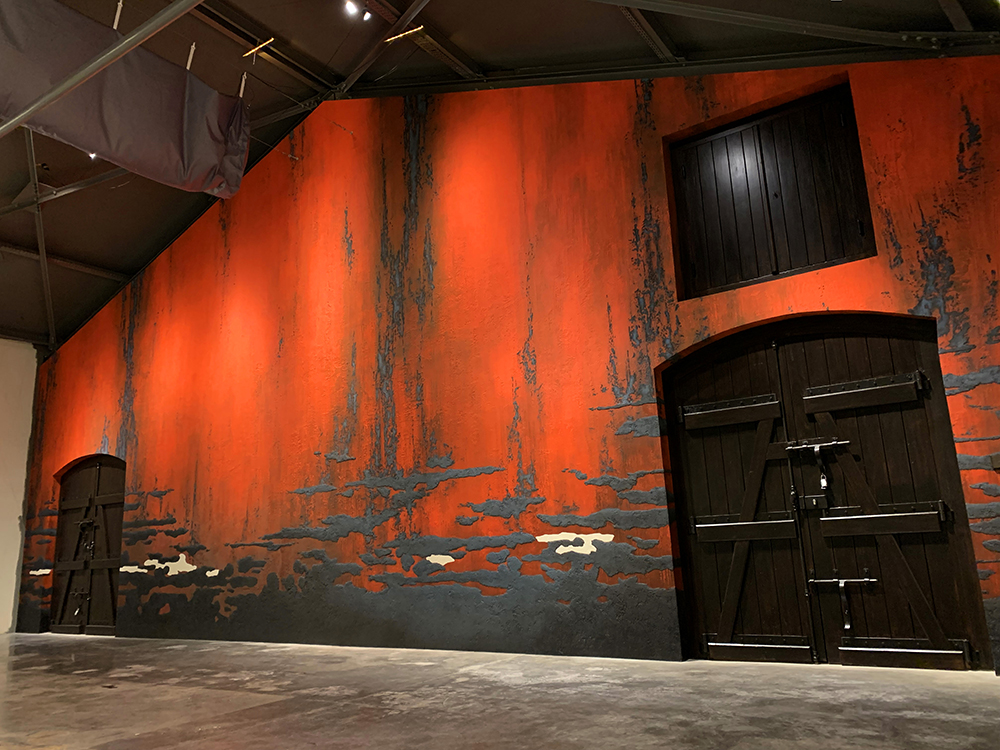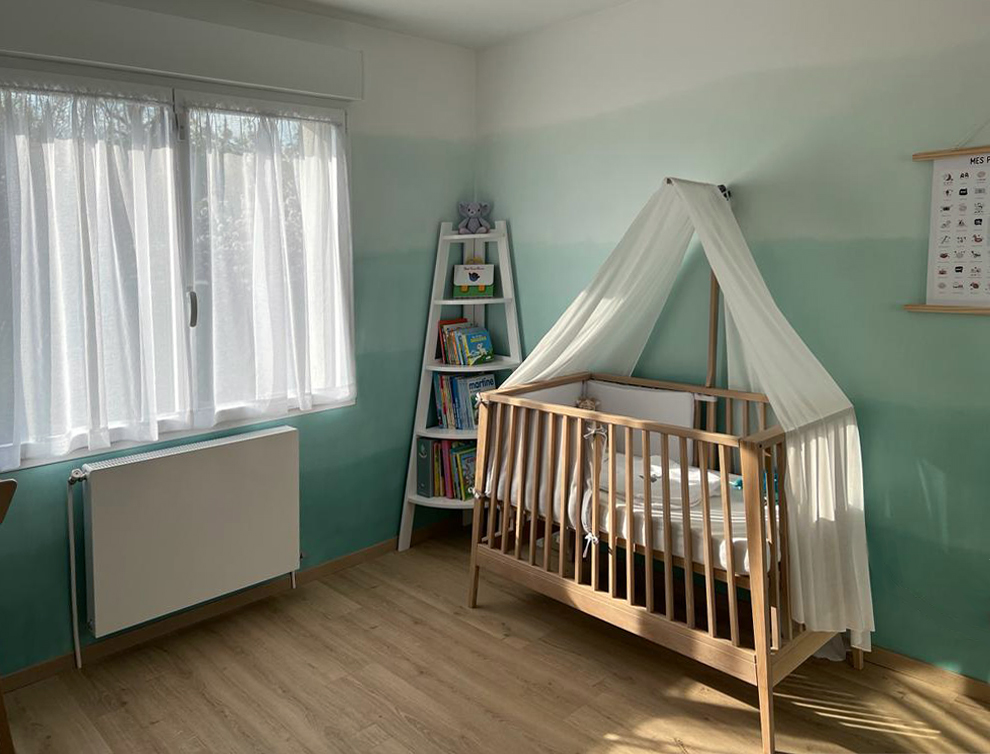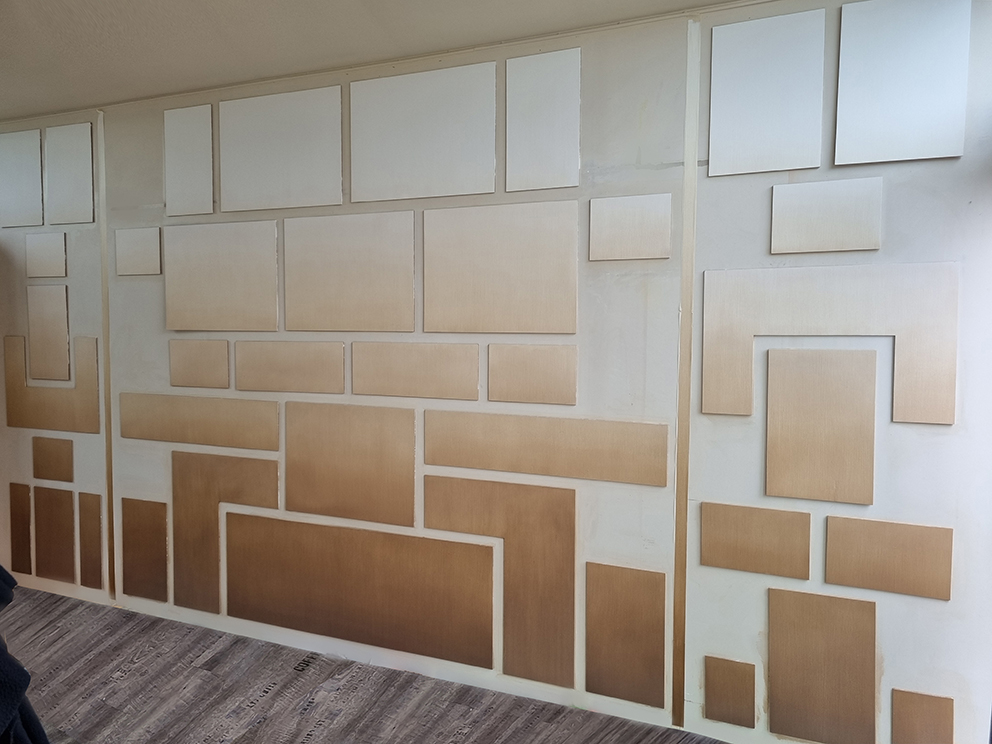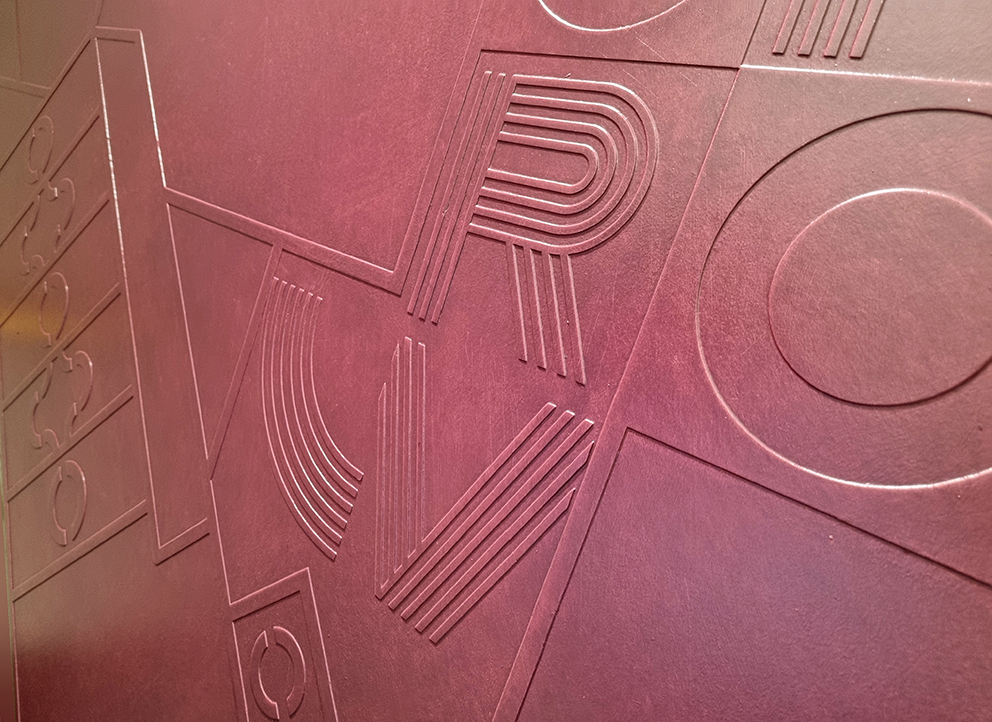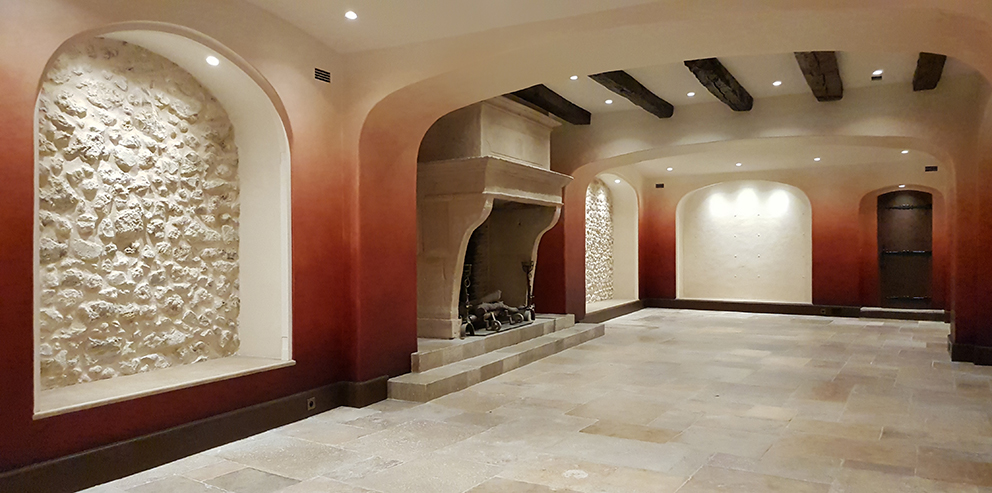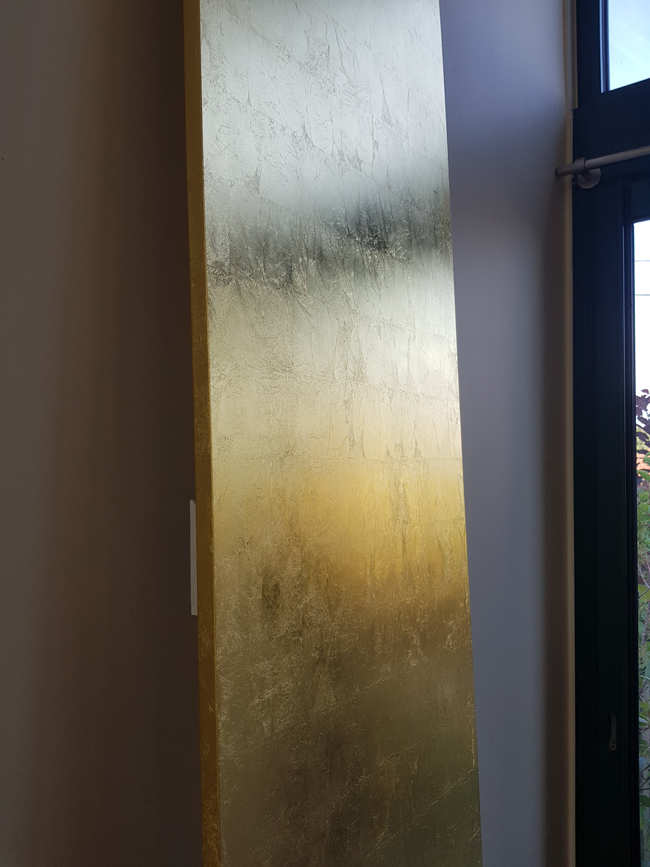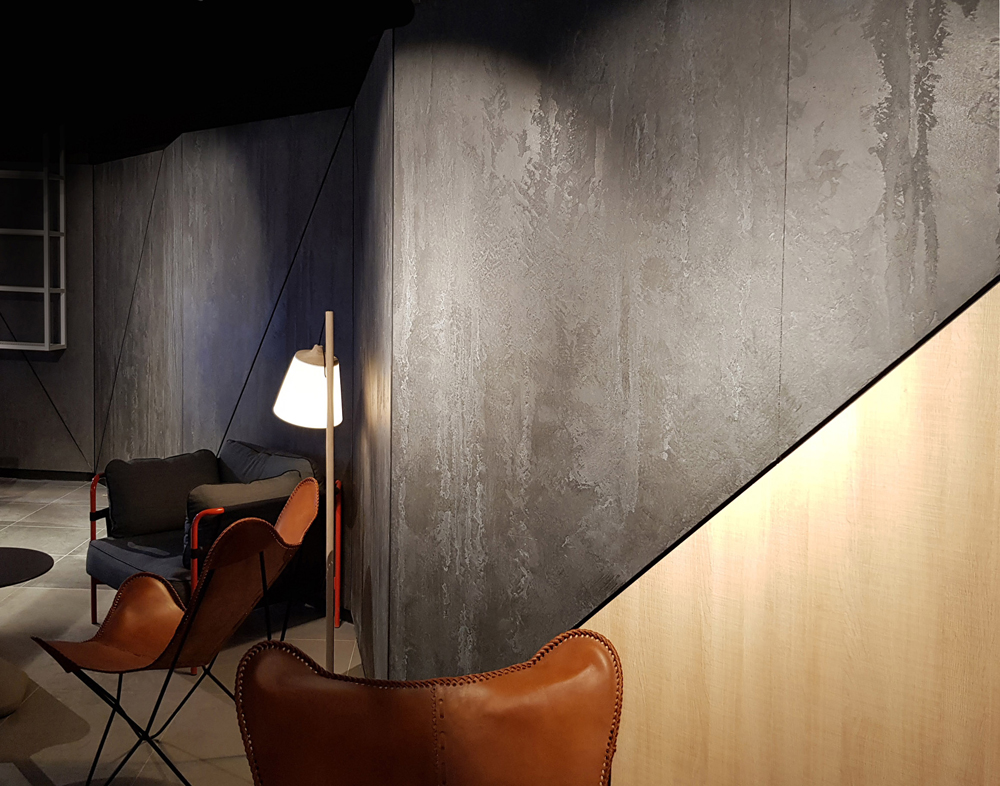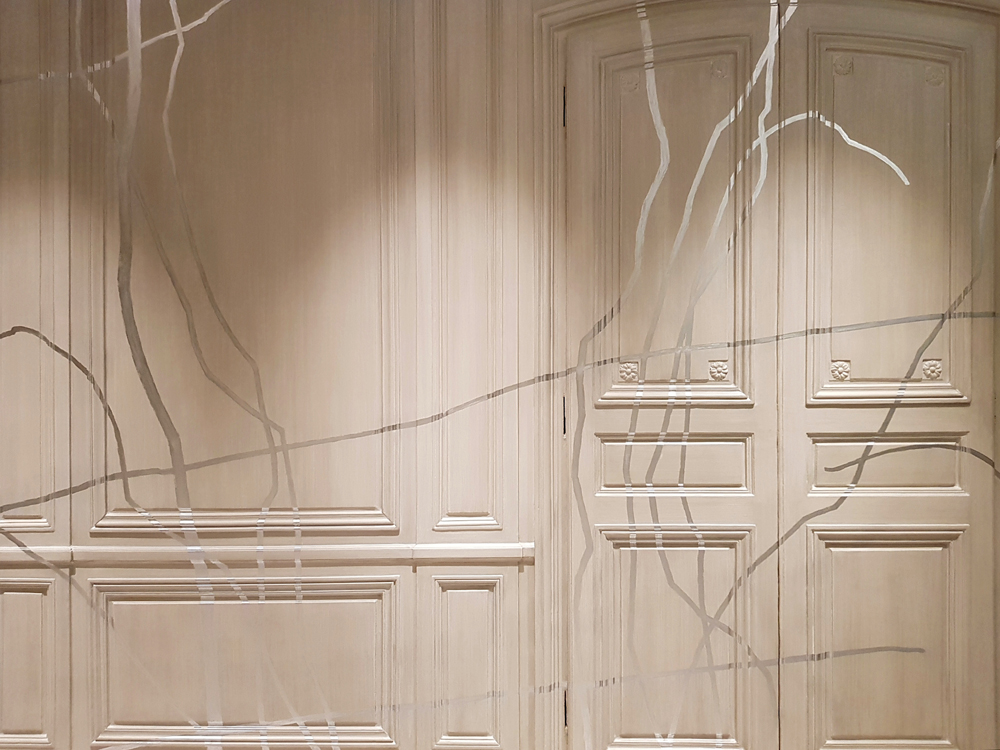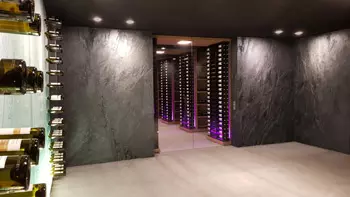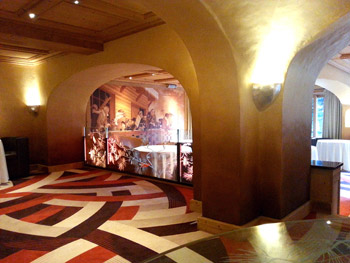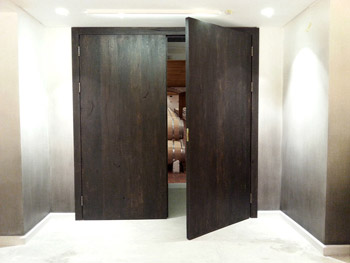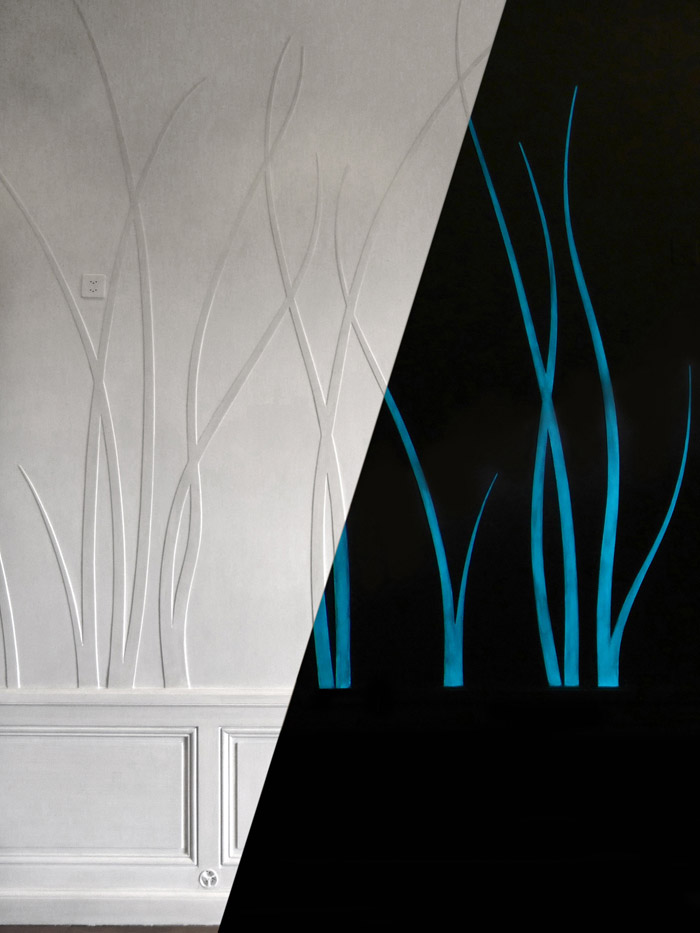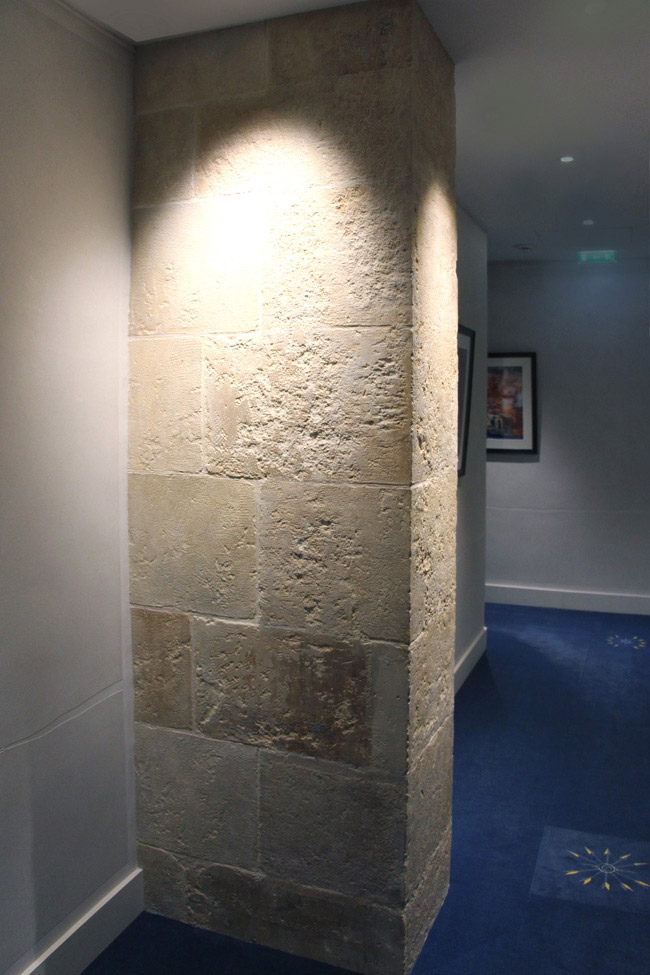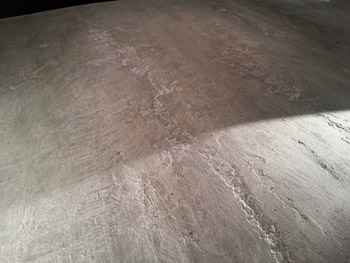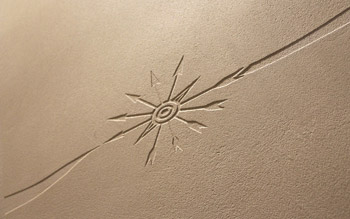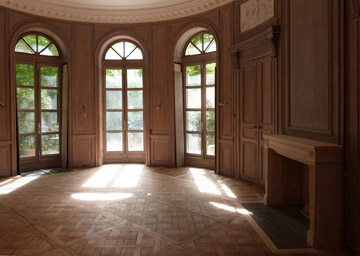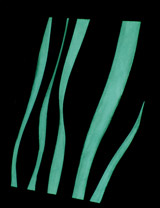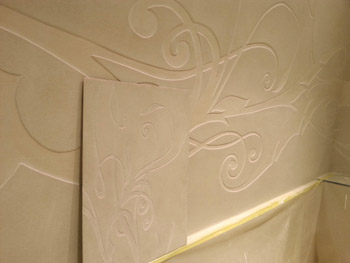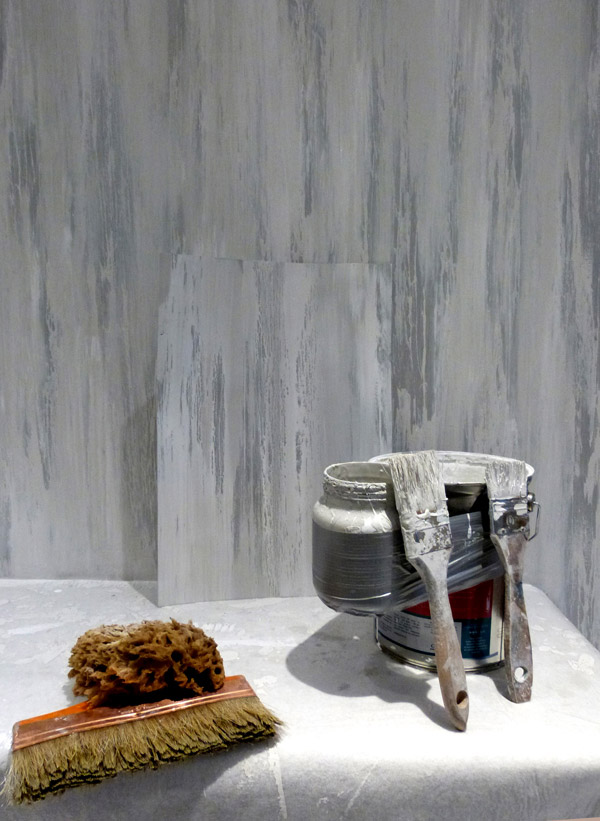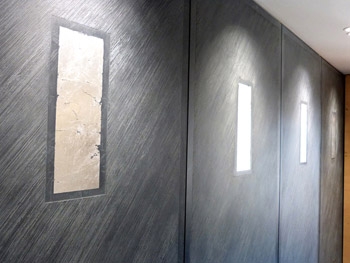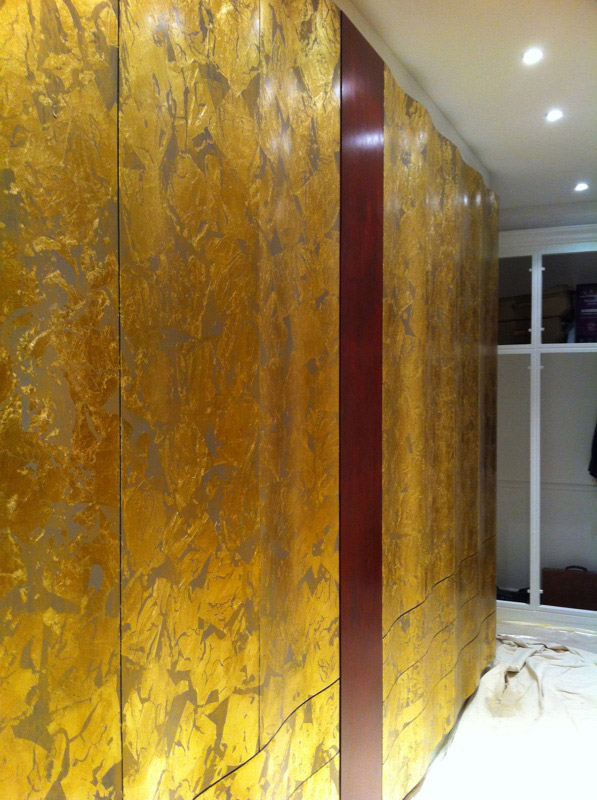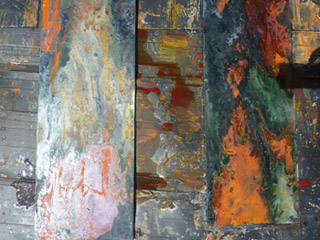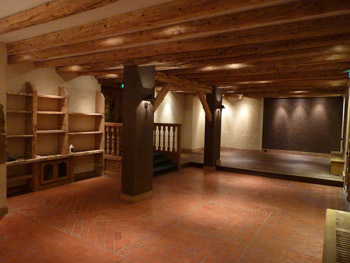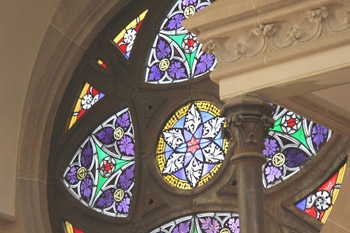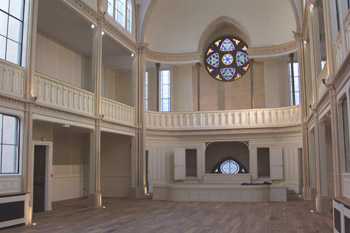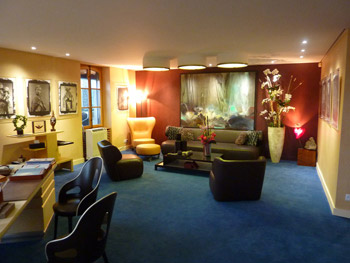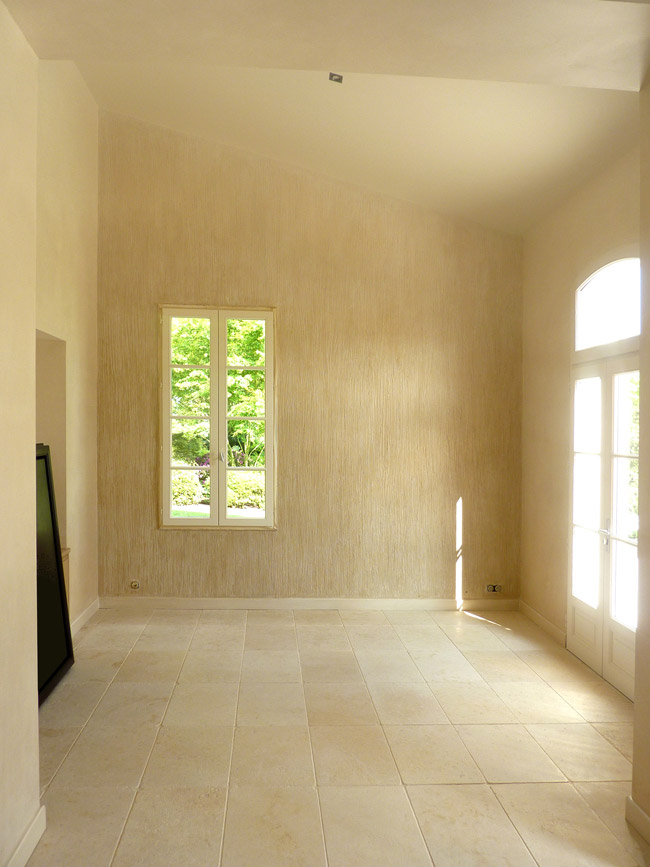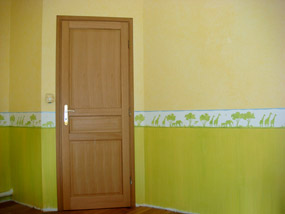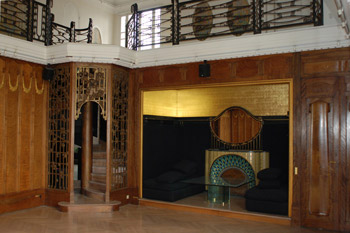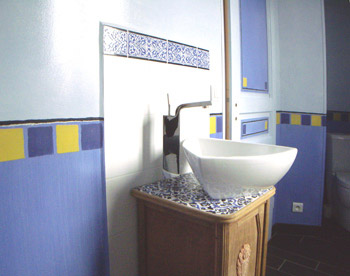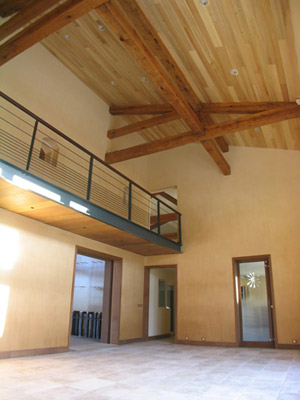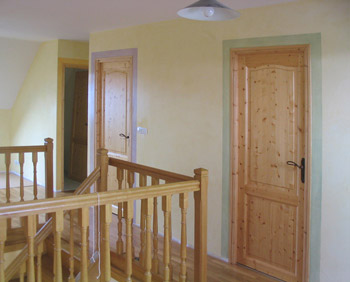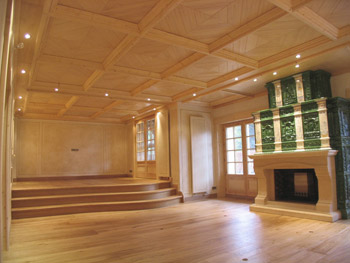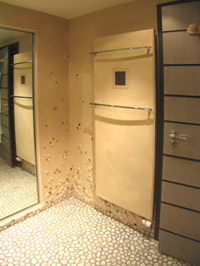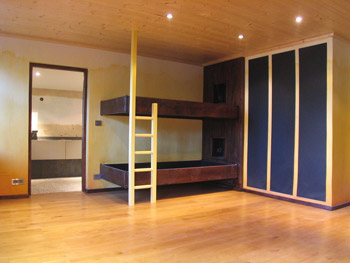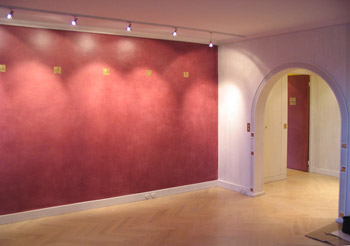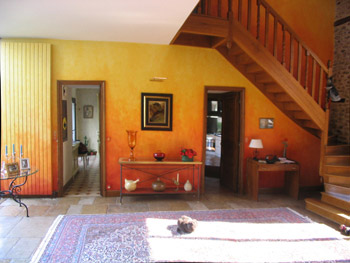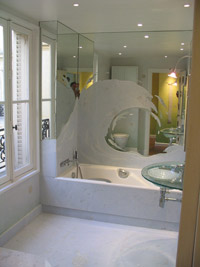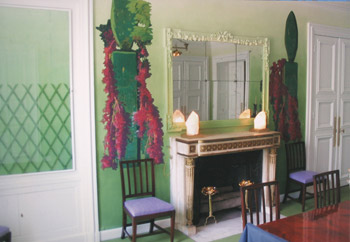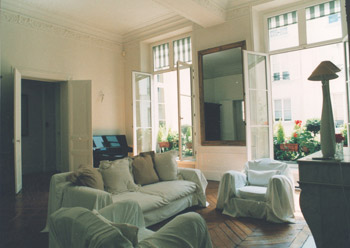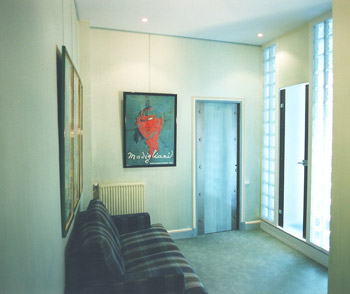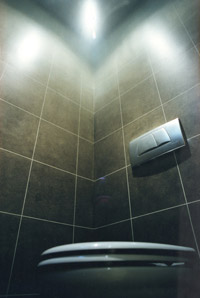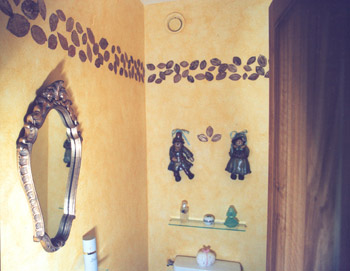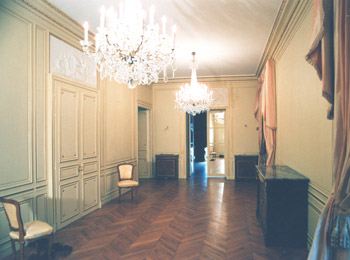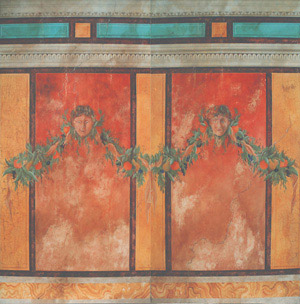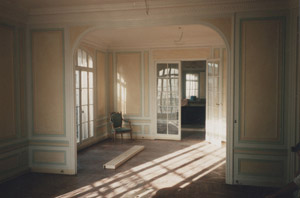Stèle asiatique
Cette stèle d’époque Napoléon III a eu les dorures ravivées et le dessus réinventé. Tâché, abîmé et refait il y a longtemps dans un esprit ne correspondant pas, j’ai proposé l’imitation d’une laque chinoise craquelée sur fond rouge afin de garder une harmonie avec le pied.
Les dernières photos ont été prises lors du « craquelage » de la patine noire. L’ensemble a été vernis puis ciré.
Sceaux dans les Hauts de Seine (92)
Radiateur CINIER
Suite à la rénovation de son appartement, la propriétaire a souhaité faire installer de nouveaux radiateurs. Il existe de nombreux motifs et de rajouts possibles en relief sur les radiateurs CINIER.
Il m’a été demandé de réaliser un décor plus « artistique » que celui proposé en catalogue. A noter que j’ai accepté de travailler uniquement sur le rajout qui chauffe peu.
Voici la réalisation de feuilles dorées posées façon « arrachées » sur poudre d’or. Au préalable, une patine ton brun a été faite pour garder l’harmonie avec l’ensemble du radiateur.
Sceaux dans les Hauts de Seine (92)
Dégradés bicolores
Voici la chambre d’Eve peinte en rose et bleu dont l’intensité est plus forte au milieu des murs. Les teintes s’estompent vers le plafond et le sol.
Sainte Geneviève des Bois
Corten
Dans ce chai monumental, Gilles Chabrier avec qui j’ai conçu l’ensemble décoratif, a eu l’idée d’apporter des effets de lumière en utilisant des panneaux ajourés suspendus. Il a été décidé de les traiter dans une imitation Corten afin d’apporter des teintes chaudes au lieu.mme de près.
Château Clarke
Mur feu
Parti volontairement d’une idée n’ayant rien à voir avec le monde du vin, ce mur « feu » situé dans le Chai Clarke est l’élément exceptionnel. Parti d’un petit échantillon, il a été décidé de le faire en grand ou plutôt en immense ! Vu l’ampleur du lieu, les volumes des textures ont été exagérées et amplifiées pour les voir de loin comme de près.
Château Clarke
Chai Merle Blanc
Récolte de petite production au sein du Château Clarke, son chai se devait intimiste. La propriétaire souhaitait un effet « boîte » foncé. Le Merle Blanc comme son nom l’indique est un blanc. C’est la raison pour laquelle les bas de murs ont été conservés en blanc. Les balayages noirs offrent un fondu et un contraste saisissant sur le blanc tout en restant intemporel.
Château Clarke
Craquelures
Voici un chevet qui devait respecter un motif imposé sur fond de vraies craquelures. La difficulté était d’obtenir cet effet craquelé surtout sur une surface ronde. C’est après de nombreux essais et de recherches qu’il a été possible de les obtenir. Les dessins sont en bleu Klein.
Strates en dégradé
Voici la chambre d’Ella dont les patines ont été faites en strates avec un fondu entre chacune d’elles.
Sainte Geneviève des Bois
Parfums CARON
23 rue François 1er, Paris
Window backgrounds
It was necessary to position the precise locations and spaces of the numbered panels. A thickened paint was combed vertically to give a weave, a fibre, before the general gradation was created.
Palma
Embossing
The principle of leaving a pre-cut and self-adhesive support under the paint and patinas, leaves enough relief to give the illusion of a leather or paper that has been embossed under a hot press as it should be.
CARON shop, Paris 8ème
Champagne Museum
Ay-Champagne near Epernay
Odilon Redon
Peyre-Lebade in the Médoc
Gold leaf on panels
Place St Sulpice à Paris
The Parc des Princes
Paris 16éme.
White bricks
Here is the creation of a long elongated brick wall. To meet customer demand with this particular format, i had to create a template that was used to make all the prints brick by brick. As in masonry, it was necessary to make the joints before painting in matt white.
Rue de Grenelle, Paris 6ème
Gold patina on sanded glass
Here are circular shades of gold tone bronze powder on a sandblasted pattern by Gilles Chabrier, glass sculptor. This principle of transparency must be done so that the golden surface is visually predominant and the most illuminated. To keep this effect, the back should be dark enough and should not receive the sun or too strong lighting.
Novotel Annecy
Annecy
Contemporary branches
In the heart of Paris, this living room overlooks a beautiful garden with a terrace and a wall of water. It was natural to bring a plant introduction to this place. The principle of entanglement of contemporary branches has been retained. The contrast of the mat patina and the metallic shine of the branches gives perpetually changing reflections when moving in front of or depending on the lighting and the weather.
The "veined white" type marble fireplace deserved to be highlighted. A peelable varnish was applied in the first layer in order to preserve the support intact and so that it can be easily removed in the future. This technique allows to give all the desired colors without altering or needing to strip the original marble.
Bank, Paris
Black rock
MACÁN Bodega, Samaniego in Spain
Degraded on mouldings
Bank, Paris
The "1920" Chalet du Mont d’Arbois
Le Mont d'Arbois, Megève
Blackened wood and graded patinas
Bank, Tel Aviv
"Day/Night" decoration
Switzerland
Restoration of a Paris stone
Bank, PARIS 8th
Muséoseine
Caudebec en Caux, Normandy
Inclusion in sand
Bank, PARIS 8th
Oval lounge
Boulevard St Germain, Paris
Sgraffito sandblasted plasters
Switzerland
Silver "retracted" patinas
Switzerland
Blackened patinas in shades
Switzerland
Bleached "retracted" patinas
Switzerland
Grey on woodwork
Bank, Paris 8ème
Banking director's office in Geneva
Bank, Switzerland
Steel rosette
58 rue de Lille, Paris 7ème
Protestant Temple
58 rue de Lille, Paris 7ème
Tin on mahogany
Bank, Paris 8ème
Male office
Rue du Château, Marolles en Hurepoix in Essonne.
Swiss office of Mrs. de R.
EdR Rue de Hesse, Geneva, Switzerland
Cardiology practice of Dr. Vittecoq
Saint Michel sur Orge in Essonne
Real concrete decorative posts
The Club House of Mont D'Arbois, Megève in Haute Savoie
Brushed patina poached plum
Villa Poirier Paris 15th arrondissement
Screened patterns on doors
Villa Poirier Paris 15th arrondissement
Vertical relief plaster
Château Clarke in the Médoc
Waxed plasters on a red background
Marolles in Hurepoix, in Essonne (91)
SPA: indoor swimming pool and jacuzzi
Chalet du Mont d'Arbois, Megève
Decorative lotus flower in relief
Paris 8th
Striated brown stripes
Varennes Jarcy (91)
Pastel surrounds for doors
Villiers sur orge in Essonne (91)
Large mountain chalet lounge
The walls are talched, sanded and then patinated in a "whitewash" style, then raised by large, more sustained frames. For finishing dark nets and bleached selvedges around the frames. It should be noted that the radiators have received thickened paints instead of the effect given by the plaster.
Mont d'Arbois, Megève
pebble rain
Bathroom, with a density of pebbles that intensifies downward until it reaches the floor laid by the tilesetters. Real sand was glued between the rollers on all the walls including the radiator. A piece of ferrugem slate (from the shower cubicle) was attached to the centre of the radiator. The shell on the mirror was designed by me.
Mont d'Arbois, Megève
bunk beds
Children's room with bunk beds and alternating dark woods and shaded orange-yellow patinas on the walls. On the top of the walls we will find silhouettes of trees, mountains, etc.... The cupboard doors are painted with slate, a painting imitating slate that allows to draw with chalk and then wipe.
Mont d'Arbois, Megève
Combination of grey and plum patinas
Here is a set of plum/light grey colour contrasts for this entrance, living room and dining room set. A brushed effect with a blade imprint for the plum colour and a relief combing effect for the light grey, all enhanced by the installation of gilded leaves in pieces on the doors, wall and library.
Rue Parmentier in Neuilly sur Seine
Stencils for glued sand
In this wave bathroom (real marble), realization of a patina combed in relief then degraded in the blues/water green. Glued sand patterns were applied using stencils created by me. These come out of the wall of about 3mm, are very hard and despite the glue have kept the real color of the sand.
Paris 8th
Spanish theatre sets
Creation in a dining room of a degraded patina in green tones over the entire height of the walls. Cutting and collage of old Spanish theatre sets painted in gouache on kraft paper from the 1920s. Old window: realization on canvas of a trellis and a gradient background, all glued to the back of the window FACE painting.
Rue du Cirque, Paris 8e




